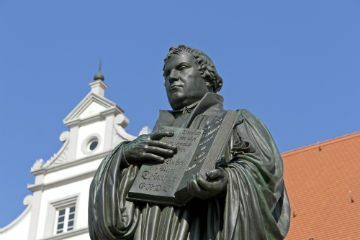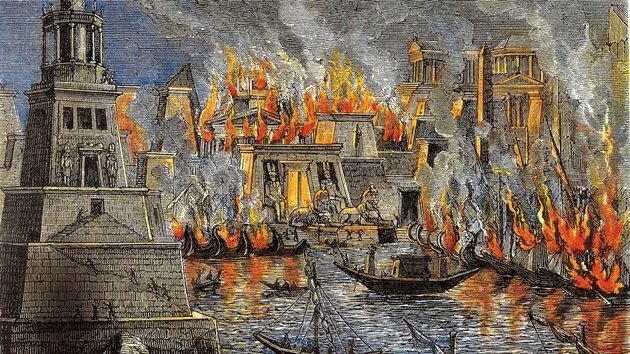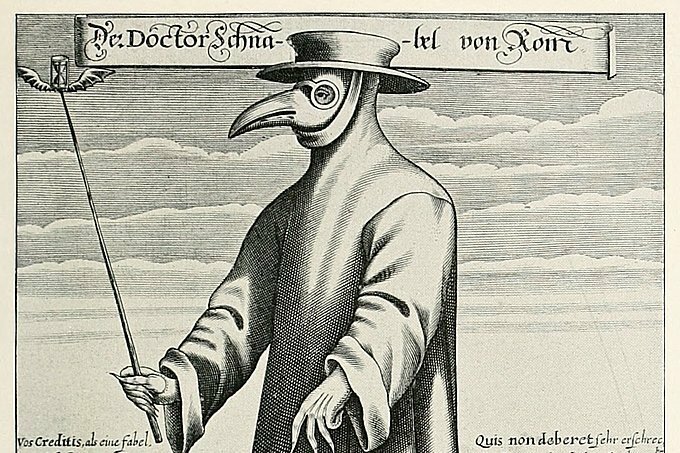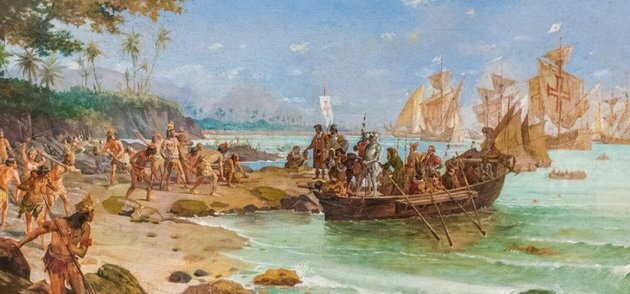THE Protestant Reformation it was the great religious transformation of the modern age, as it broke the unity of Christianity in the West.
On October 31, 1517, Martin Luther fixed the 95 theses that criticized certain practices of the Catholic Church on the door of the Castle church.
This fact is considered to trigger the reform that would change Christianity forever.
Today, Lutherans all over the world commemorate on this day the "Protestant Reformation Day".

Statue of Martin Luther, located in Witenberg, Germany
Origin of the Protestant Reformation
The process of monarchic centralization that dominated Europe since the end of the Middle Ages strained the relationship between kings and the Church.
The Church - possessing large tracts of land - received feudal tributes controlled in Rome by the Pope. With the strengthening of the National Absolutist State, this practice came to be questioned by monarchs who wished to retain these taxes in the kingdom.
Some of the peasants were also unhappy with the Church, as they also had to pay taxes, such as tithing. Across Europe, monasteries and bishoprics owned immense estates and lived off the workers of the city and countryside.
The Church condemned nascent capitalist practices, including "usury" - charging interest on loans - considered a sin; and defended the commercialization at "just price", without abusive profit.
This doctrine was against the new mercantilist practices of the end of the Middle Ages and stopped the investment of the mercantile and manufacturing bourgeoisie.
However, the demoralization of the clergy, who despite condemning usury and distrusting profit, came with the practice of trading in ecclesiastical goods.
The clergy used their authority to obtain privileges and the sale of Church offices, a practice called "simony." Likewise, many priests had wives, despite obligatory celibacy, in a heresy known as "Nicolaism."
The biggest scandal was the indiscriminate sale of indulgences, that is, the remission of sins in exchange for payment of money to religious.
Luther's Reformation
The Protestant Reformation was started by Martin Luther (1483-1546), German Augustinian monk, and professor at the University of Witenberg. Critical, he denied some practices preached by the Church.
In 1517, disgusted by the sale of indulgences made by the Dominican John Tetzel, Luther wrote in a document with 95 points criticizing the Church and the Pope himself.
These 95 theses would have been nailed to the door of a church for its students to read and prepare for a class debate. However, some students decided to print them and read them to the population, thus spreading censorship to the Catholic Church.
In 1520, Pope Leo X drafted a bull condemning Luther and demanding his retraction. Luther burned the bull in public which aggravated the situation. As early as 1521, Emperor Charles V called an assembly, called the "Diet of Worms", in which the monk was considered a heretic.
However, Luther was welcomed by the German nobility, who sympathized with his ideas and took refuge in the castle of Wartburg. There he devoted himself to translating the Bible from Latin into German and developing the principles of the new religion.
There followed religious wars that were only concluded in 1555, for the "Peace of Augsburg". This agreement determined the principle that each ruler within the Holy Empire could choose his religion and that of his subjects.
Calvinism and Protestant Reformation
Luther's revolt and ideals spread across the European continent. In each region, the Lutheranism it took on different characteristics, as many religious began to study Luther's writings and propose the renewal of the Church.
On the other hand, in France and Holland, Luther's principles were amplified by John Calvin (1509-1564). Belonging to the bourgeoisie and influenced by Humanism and Lutheran theses, Calvin became an ardent defender of new ideas.
He wrote the "Institution of the Christian Religion", which became the catechism of the Calvinists. Persecuted, he took refuge in Geneva, Switzerland, where the Reformation had been adopted. He spurred the reform movement through new principles, completing and extending Lutheran doctrine.
He determined that there were no images in the churches, no priests in robes. The Bible was the foundation of religion, not even having a regular clergy.
For Calvin, salvation did not depend on the faithful but on God, who chooses the people who should be saved (doctrine of predestination).
O Calvinism it expanded rapidly throughout Europe, more so than Lutheranism. It reached the Netherlands and Denmark, as well as Scotland, whose followers were called Presbyterians; in France, Huguenots; and in England, Puritans.
Counter-Reformation or Catholic Reformation
For a long time it was taught that the Counter-Reformation was the movement that arose in Europe as a result of the expansion of Protestantism.
Today, however, historians prefer the term Catholic Reformation. After all, several Catholic theologians such as Thomas Morus and Erasmus of Rotterdam had already written about the need to change certain aspects of the Church, long before Luther himself.
In this way, the Catholic Church accelerates the taking of a series of measures to contain the Protestant ideas.
One of them was to support the Society of Jesus, founded by Ignatius Loyola in 1534. Its members, known as the Jesuits, had full confidence in the pope and sought to combat Protestantism through teaching and expanding the Catholic faith.
Council of Trent
In 1545 and 1563, the Council of Trent, with representatives of the Catholic Church from all over Europe. Also present were members of the Lutheran and Orthodox Church.
Let's look at the main decisions:
- the regular clergy would have to study at the Seminaries if they wanted to become priests.
- parish priests were forced to live in their parishes and pay special attention to doctrinal preaching.
- the sale of religious offices was prohibited
- “Index” was created, a list of books banned by the Church, including scientific books by Galileo, Giordano Bruno, among others.
Read too:
- Company of Jesus
- Counter-Reform
- Holy Roman Empire
- Catholicism
- English Revolution
- Henry VIII
- Reform and Counter-Reform
Entrance Exam Questions on the Protestant Reformation
1. (PUC-MG) In 1517, in the Holy Roman Empire, the reform movement led by Martin Luther, who defended:
a) faith as a fundamental element for the salvation of individuals.
b) relaxation of the customs of Church members at that time.
c) obligatory confession, fasting and worship of saints and martyrs.
d) the principle of predestination and the search for profit through work.
e) the recognition of the monarch as the supreme head of the Church.
a) Faith as a fundamental element for the salvation of individuals.
2. (UEL) Among the factors that contributed to the spread of the Protestant Reform Movement at the beginning of the 16th century, the following stand out:
a) the curtailment of freedom of criticism caused by the Cultural Renaissance.
b) the decline of urban particularism that favored the emergence of Universities.
c) the political abuse committed by the Society of Jesus.
d) the political conflict observed in both Germany and France.
e) the inadequacy of Catholic religious theories with the progress of commercial capitalism.
e) The inadequacy of Catholic religious theories with the progress of commercial capitalism.
Check out more questions with commented feedback on Exercises on the Protestant Reformation.
Bibliographic references
Delumeau, Jean - La Reforma. Col. Nueva Clio - the story and its problems. Barcelona. Editorial Labor: 1985.



